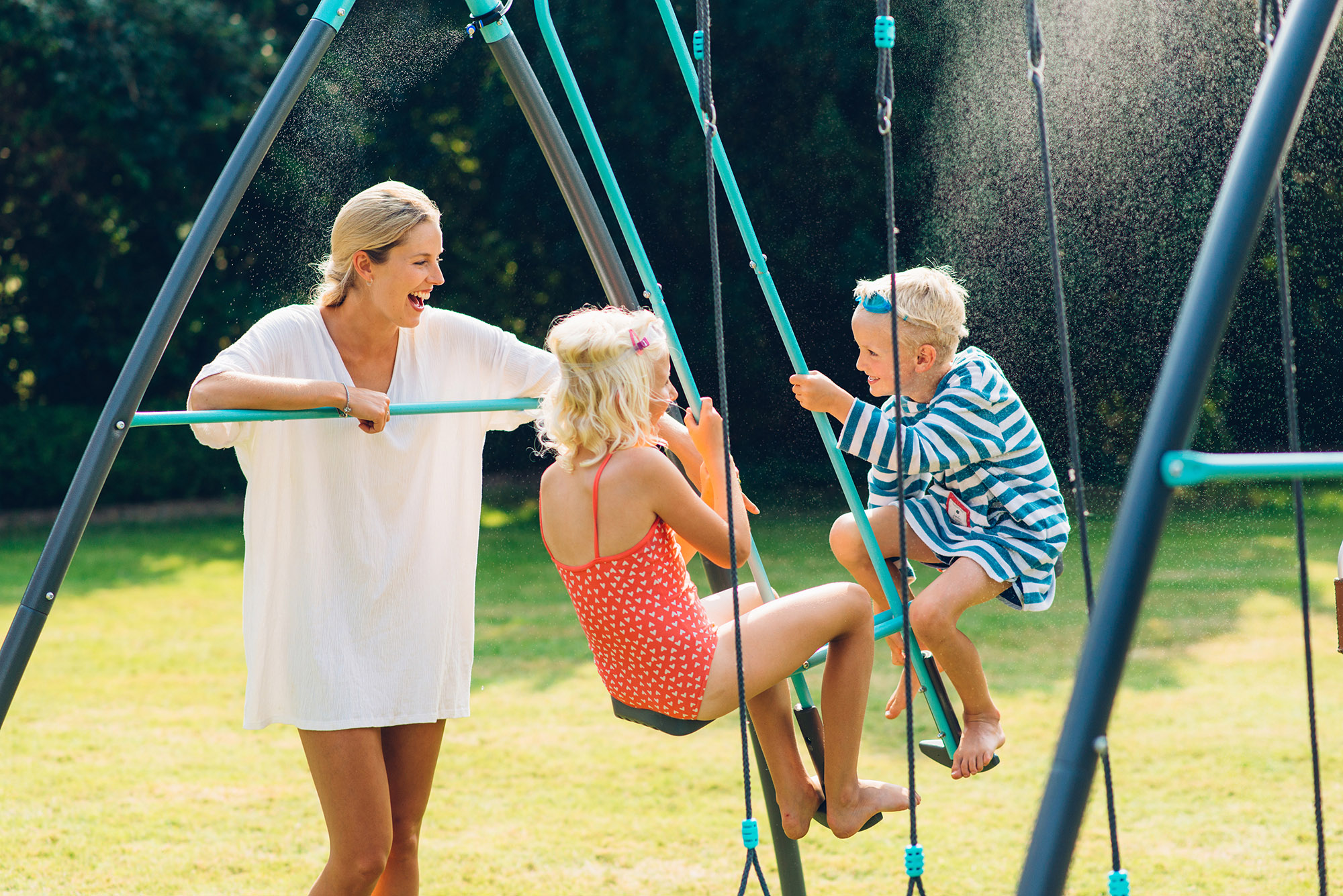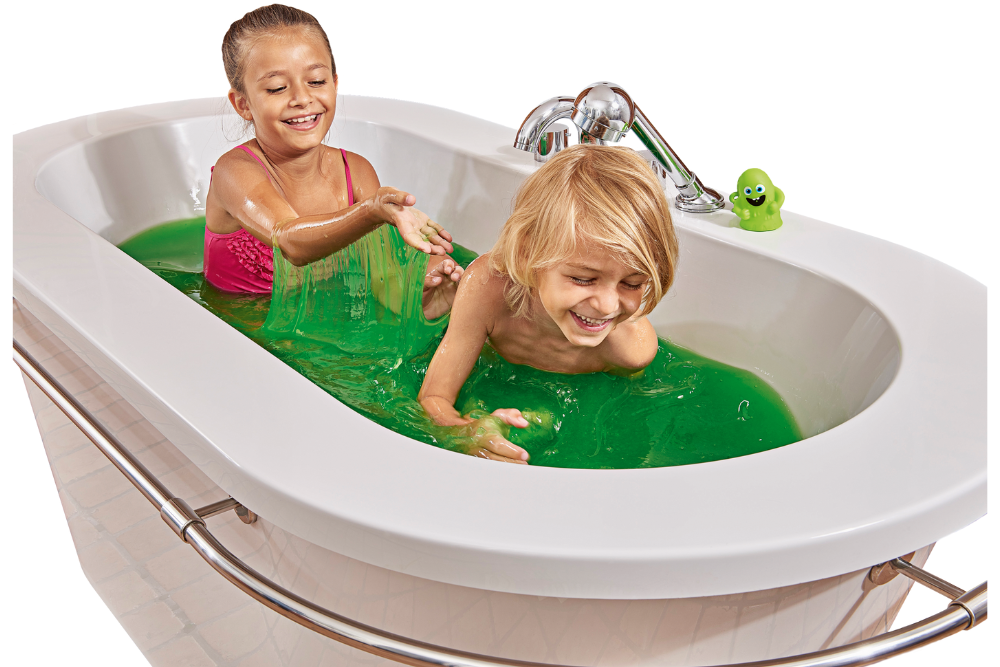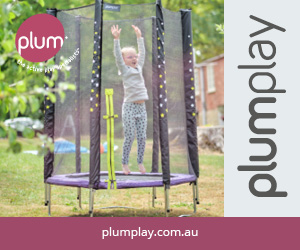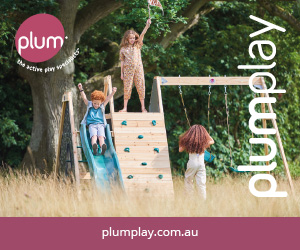Close your eyes and picture a beautiful, sunny day outside. The warm sun is shining down on your backyard, the birds are chirping, and your children are running around, giggling and playing. Suddenly, they spot a sandpit and water table filled with sand and water. Their eyes widen with excitement as they approach, eager to explore and play.
As they dip their hands into the sand, they feel the rough, gritty texture between their fingers and marvel at how it shifts and moves. The sound of the sand cascading into the bowls is like music to their ears as they create mountains, valleys, and intricate patterns.
Next, they turn to the container of water glistening in the sun and are greeted with a refreshing, cool sensation as they dip their fingers in. They experiment with pouring and mixing the water with the sand, creating new textures and colours. The combination of the two elements provides endless opportunities for creativity and discovery.
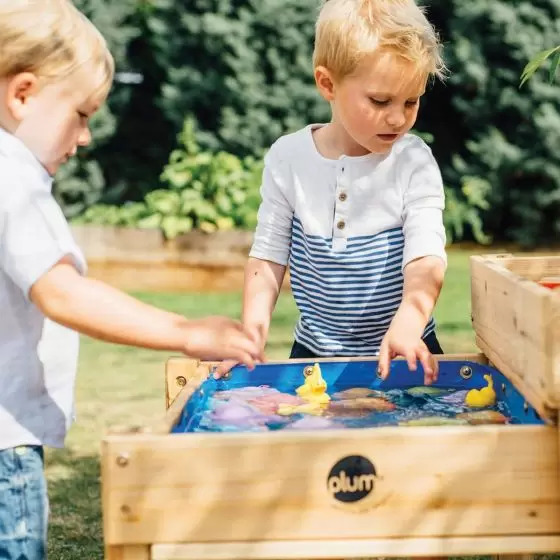
But it’s not just the sand and water engaging their senses. The wooden table provides a natural, calming backdrop to their play, allowing them to immerse themselves in the sensory experience fully. The feel of the rough wood against their skin, the smell of the fresh air and sunshine, and the sound of their laughter and chatter all contribute to the magical atmosphere.
Sand and water play is not just reserved for the beach or playground – it can be an incredible sensory experience for children in their backyard. The combination of sand and water provides a unique tactile and visual experience that engages their senses and sparks their imagination. The possibilities for exploration and creativity are endless, from building sandcastles to creating water channels. And as a parent, there’s nothing quite like seeing the joy and wonder on your child’s face as they discover and learn through sensory play.
With outdoor sand and water play, be it using sandpits or a kids’ activity table such as the Sandy Bay Wooden Sand & Water Tables, your children can explore and discover the wonders of the natural world while engaging their senses and developing essential skills. It’s a space where they can let their imaginations run wild, create memories, and experience the joy and wonder of childhood.

To help us better understand the benefits of sand and water play, we talk with our friends at Plum Play.
For over 35 years, Plum Play have been pioneering the design and development of leading outdoor play equipment. Dedicated to prioritising quality, innovation, safety, and sustainability, their commitment to these principles has helped them build a strong reputation and earn the trust and loyalty of parents and caregivers worldwide.
Why are sand and water play an excellent sensory play idea?
Sand and water play are popular sensory play ideas because they provide a unique sensory experience that engages children’s senses of touch, sight, and sound. Both sand and water are natural materials that children can manipulate and explore, allowing them to learn and develop new skills through play.
Sand:
Sand provides a unique sensory play experience in several ways. Its texture is rough and grainy, providing a tactile experience for children as they run their fingers through it, build structures with it, and even use it to create designs and patterns. The texture of sand also changes depending on how wet or dry it is, which can help children understand concepts such as absorption and density.
Whilst playing in a wooden sandpit such as the Plum® Treasure Beach Wooden Sandpit with sandpit toys, children can feel the individual grains slipping between their fingers and the way the sand shifts and moves can be fascinating to watch.
< Lifestyle Image of Treasure Beach Wooden Sandpit >
In addition to the tactile experience, and can also provide a visual experience. As children pour sand into containers or create sandcastles, they can see the different colours and textures of the sand and the patterns and shapes they make.
The sound of the sand can also contribute to the sensory experience. As children pour sand into containers or move it around, they can hear the sound of the sand falling, which can be soothing and satisfying.
Predominantly, the unique combination of texture, colour, and sound that sand provides can engage children’s senses and encourage them to explore and create in a fun and educational way.
How does sand provide a sensory play experience for children on the spectrum?
Sand can provide a beneficial sensory play experience for children on the autism spectrum in several ways. Many children with autism have sensory processing differences, meaning they may have difficulty processing and responding to sensory information like neurotypical individuals. Outdoor play in sandpits can be a valuable tool for addressing these differences and helping children to regulate their sensory systems.
The tactile experience of sand can be especially beneficial for children with autism, as it can provide a calming and soothing sensation. Many children with autism may seek out tactile stimulation to regulate their sensory systems, and sand’s rough and grainy texture can provide a satisfying sensory experience for them.

In addition to the tactile experience, sand play can be a valuable tool for developing fine motor skills and hand-eye coordination. As children manipulate the sand, they can improve their ability to grasp and manipulate objects, which can positively impact their overall development.
Finally, sand play can be an inclusive activity that promotes social interaction and communication skills. Children can work together to build sandcastles, create patterns, and experiment with different textures and colours, all while developing critical social skills.
Overall, sand play can be a beneficial sensory experience for children on the autism spectrum, providing a safe and calming environment for them to explore and learn.
Water:
On the other hand, water provides a sensory experience different from the sand. Children can pour, splash, and manipulate the water in various ways, observing how it moves and changes. They can also experiment with floating or sinking objects and learn about buoyancy and displacement.
Water provides a unique sensory play experience for children in several ways. Its fluidity and weightlessness offer a different tactile experience from solid materials like sand or playdough. Children can feel the cool, refreshing sensation of the water as they dip their fingers in and move it around.
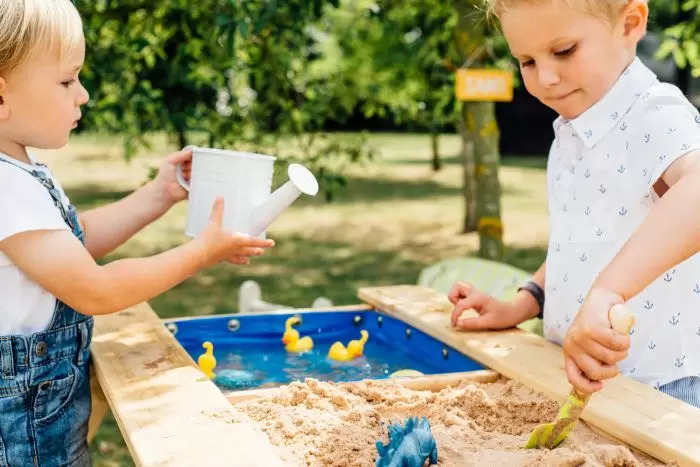
In addition to the tactile experience, water play can also provide a visual experience. As children pour water into containers or mix it with other materials like sand or paint, they can see how the water changes colour and texture and watch as it flows and splashes.
The sound of water can also contribute to the sensory experience. As children pour water from one container to another or splash it with their hands, they can hear the sound of the water moving and falling, which can be soothing and satisfying.
Finally, water play can be a valuable tool for developing gross motor skills, as children can practice pouring, splashing, and moving water from one container to another. They can also experiment with different materials, temperatures, and water volumes, promoting problem-solving skills and scientific inquiry.
Water play provides a fun and engaging sensory experience for children that can stimulate their senses, promote exploration and creativity, and contribute to their overall development.
How does sand provide a sensory play experience for children on the spectrum?
Water play can provide a beneficial sensory experience for children on the autism spectrum in several ways. Many children with autism have sensory processing differences, meaning they may have difficulty processing and responding to sensory information like neurotypical individuals. Water play can be a valuable tool for addressing these differences and helping children to regulate their sensory systems.
The tactile experience of water can be especially beneficial for children with autism, as it can provide a calming and soothing sensation. Many children with autism may seek out tactile stimulation to regulate their sensory systems, and the weightlessness and fluidity of water can provide a satisfying sensory experience for them.

In addition to the tactile experience, water play can be a valuable tool for developing gross motor skills and hand-eye coordination. As children pour water from one container to another or manipulate it in different ways, they can improve their ability to grasp and manipulate objects, which can positively impact their overall development.
Water play can also promote social interaction and communication skills. Children can work together to pour and mix water, experiment with different materials and textures, and develop problem-solving skills. The open-ended nature of water play can encourage creativity and imaginative play, which can be particularly beneficial for children with autism who may struggle with social skills or communication.
In general, water play can be a beneficial sensory experience for children on the autism spectrum, providing a safe and calming environment for them to explore and learn while also promoting their overall development.
Together, sand and water play offer a rich sensory experience that can help children develop their fine motor skills, hand-eye coordination, and creativity. They can also provide opportunities for social interaction and communication as children work together to build sandcastles or create water channels.
Comprehensively, sand and water play is a great sensory play idea because it offers a fun and engaging way for children to explore and learn about the world around them.
To view the Plum range visit: https://www.plumplay.com.au/
——
Plum Play is a well-established and renowned industry leader in outdoor play.
There are several reasons why they are considered industry leaders:
- Quality and durability: Plum Play is known for producing high-quality, durable outdoor play equipment that withstands years of use and exposure to the elements. This commitment to quality has helped establish the company’s reputation as a trusted brand among parents and caregivers.
- Innovation: Plum Play is constantly innovating and introducing new products designed to meet the evolving needs of families and children. This includes incorporating new materials and technologies to improve the safety and functionality of their products, as well as incorporating new features and designs to make their products more engaging and fun for children.
- Safety: Plum Play prioritises safety, and their products are designed with safety in mind. They adhere to strict safety standards and guidelines, and their products are tested rigorously to ensure they meet or exceed these standards.
- Sustainability: Plum Play is committed to sustainability and minimising its impact on the environment. They use eco-friendly materials and manufacturing processes wherever possible and constantly look for ways to reduce waste and improve their sustainability practices.
Plum Play’s emphasis on quality, innovation, safety, and sustainability has enabled them to dominate the outdoor play equipment industry. By consistently prioritising these core values, they have established a solid reputation and gained the confidence and loyalty of parents and caregivers worldwide.
Media was kindly brought to you by Plum Play.



